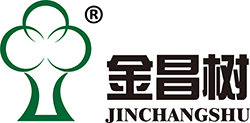Abstract: A PVC modifier with core-shell structure——ACR, this modifier has good effect on improving the plasticization and impact strength of PVC.
Keywords: Plasticization, impact strength, PVC modifier
By: Wei Xiaodong, Shandong Jinchangshu New Material Technology Co., Ltd., Weifang, Shandong
1 Introduction
Chemical building materials are the fourth new type of contemporary construction materials after steel, wood and cement, mainly including plastic pipes, plastic doors and windows, building waterproof materials, decorative materials, etc. The main raw material is polyvinyl chloride (PVC).
PVC is mainly used as construction material and its plastic profiles are widely used in indoor and outdoor doors and windows of buildings and decoration industry, with excellent characteristics such as heat preservation, sealing, energy saving, sound insulation and moderate cost, etc. Since its introduction, the product has been developed rapidly.
However, PVC profiles also have some disadvantages, such as low temperature brittleness, low impact strength, and processing difficulties. Therefore, the impact properties and plasticizing properties of PVC must be improved. Adding modifiers to PVC can effectively improve its toughness, but the modifiers should have the following properties: Lower glass transition temperature; partially compatible with PVC resin; matches the viscosity of PVC; no significant effect on the apparent and mechanical properties of PVC; good weathering properties and good mold release expansion.
PVC commonly used impact modifiers are chlorinated polyethylene (CPE), polyacrylates (ACR), methyl methacrylate-butadiene-styrene terpolymer (MBS), acrylonitrile-butadiene-styrene copolymer (ABS), ethylene a vinyl acetate copolymer (EVA), ethylene propylene rubber (EPR), etc.
Our company has developed and produced a core-shell structure PVC modifier JCS-817. This modifier has good effect on improving the plasticization and impact strength of PVC.
2 Recommended Dosage
The amount of modifier JCS-817 is 6% per 100 weight parts of PVC resin.
3 Performance test comparison between different modifiers and this modifier JCS-817
1. Prepare PVC test base material according to the formula in Table 1
Table 1
| Name | Parts by weight |
| 4201 | 7 |
| 660 | 2 |
| PV218 | 3 |
| AC-6A | 3 |
| Titanium Dioxide | 40 |
| PVC (S-1000) | 1000 |
| Organic Tin Stabilizer | 20 |
| Calcium Carbonate | 50 |
2. Test comparison of impact strength: Compound the above formulations and mix the compound with 6% of the weight of PVC with different PVC modifiers.
The mechanical properties were measured by the double-roller open mill, flat vulcanizer, sample making, and the universal testing machine and simple beam impact tester as shown in Table 2.
Table 2
| Item | Test method | Experimental conditions | Unit | Technical indexes
(JCS-817 6phr) |
Technical indexes
(CPE 6phr) |
Technical indexes
(Comparison sample ACR 6phr) |
| Impact (23℃) | GB/T 1043 | 1A | KJ/mm2 | 9.6 | 8.4 | 9.0 |
| Impact (-20℃) | GB/T 1043 | 1A | KJ/mm2 | 3.4 | 3.0 | None |
From the data in Table 2, it can be concluded that the impact strength of JCS-817 in PVC is better than that of CPE and ACR
3. Test comparison of rheological properties: Compound the above formulations and add 3% of the weight of PVC to the compound with different PVC modifiers and then mix.
The plasticizing properties measured by the Harper rheometer are shown in Table 3.
Table 3
| No. | Plasticizing time (S) | Balance torque (M[Nm]) | Rotation speed (rpm) | Test temperature (℃) |
| JCS-817 | 55 | 15.2 | 40 | 185 |
| CPE | 70 | 10.3 | 40 | 185 |
| ACR | 80 | 19.5 | 40 | 185 |
From Table 2, the plasticization time of JCS-817 in PVC is less than that of CPE and ACR, i.e., JCS-817 will result in lower processing conditions for PVC.
4 Conclusion
The impact strength and plasticizing property of this product JCS-817 in PVC is better than CPE and ACR after test verification.
Post time: Jun-15-2022
